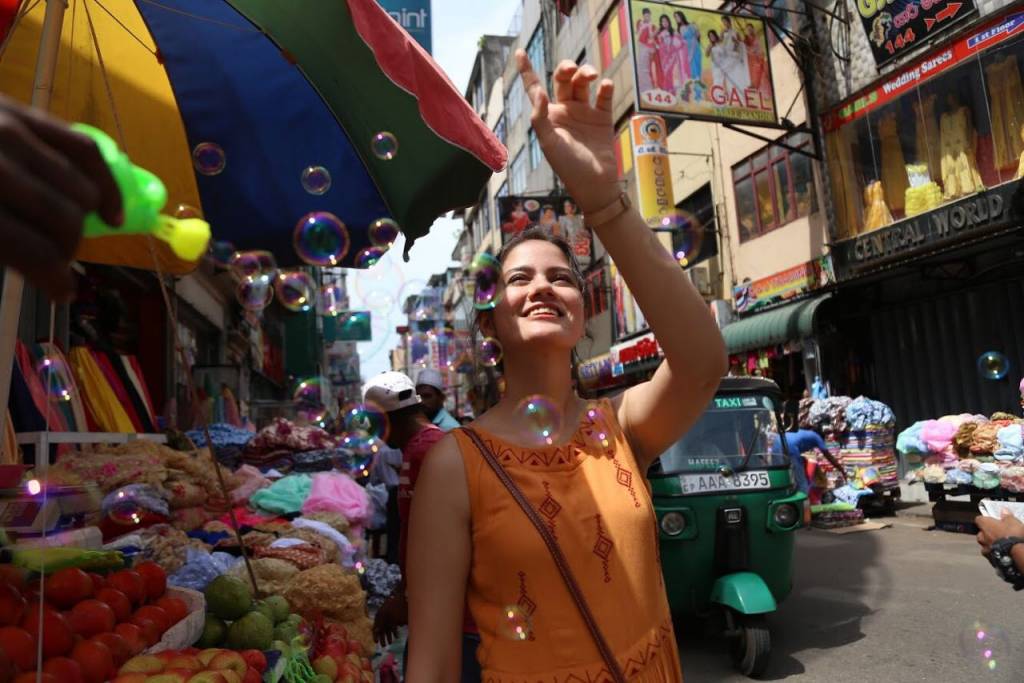2018 Jul 23
Colombo is a melting pot of cultures and heritage sites whose significance most of us have forgotten about when we hustle passed them on our daily routines. We took some time off staring at our computer screens to explore, appreciate, and truly rediscover a few hidden gems of Colombo with Indian Lifestyle blogger, @shallweslay on her recent visit to our paradise island, in a photo story like no other.


Our journey began at Wolvendaal Church. One of the oldest protestant churches in Sri Lanka, it was built in the 1700s by the Dutch. The area was named “Wolvendaal” because the Europeans mistook the roaming jackals in the area for wolves, thereby gaining the name “Wolf’s Valley”. With magnificent arches and mesmerising architecture, one can’t help but feel fascinated by the sheer amount of history that these four walls hold.
 In a speeding tuk tuk (another essential experience of Colombo living) we continued on to the Rathu Palliya. The Jami ul Alfar mosque is a well-known landmark that gains a lot of attention in the busy streets of Pettah. Used as a landmark by sailors to identify the Colombo port back in the day when the Red Mosque was one of the only high rises in Colombo, it hosts hoards of Muslims for prayers, especially on Fridays.
In a speeding tuk tuk (another essential experience of Colombo living) we continued on to the Rathu Palliya. The Jami ul Alfar mosque is a well-known landmark that gains a lot of attention in the busy streets of Pettah. Used as a landmark by sailors to identify the Colombo port back in the day when the Red Mosque was one of the only high rises in Colombo, it hosts hoards of Muslims for prayers, especially on Fridays.

 Pettah itself is the most commonly known place for all Sri Lankans, whether you’re driving an Audi or you’re in a bus or train, everybody comes to the one place where there’s something for everyone. A common sight in Pettah are the nattamis, the labourers who carter around goods piled high on theur carts, to and from shops, contributing to the diverse eco-system of organised chaos in one of the busiest but most efficient cities in our country. The busy streets are also known for its great bargains, delicious achcharu (which was way too spicy for our guest), friendly strangers and colourful sights.
Pettah itself is the most commonly known place for all Sri Lankans, whether you’re driving an Audi or you’re in a bus or train, everybody comes to the one place where there’s something for everyone. A common sight in Pettah are the nattamis, the labourers who carter around goods piled high on theur carts, to and from shops, contributing to the diverse eco-system of organised chaos in one of the busiest but most efficient cities in our country. The busy streets are also known for its great bargains, delicious achcharu (which was way too spicy for our guest), friendly strangers and colourful sights.
 Our third stop was the now-seedy Rio Hotel and Cinema in Slave Island. Known as “Colombo’s first city hotel” and boasting a pool as well as a rooftop nightclub back in the day, the Rio was torched and destroyed during the communal riots of Black July in 1983. The structure still stands tall in Slave Island and hosts the odd art exhibition or photo shoot and has even home to significant contemporary events through the years such as Cinnamon Colomboscope and Pettah Interchange.With its empty pool and deserted hallways, the Riohas now resorted to screening “adult films” and though a significant landmark in Sri Lanka, with great historic value, is avoided by the common Colombar.
Our third stop was the now-seedy Rio Hotel and Cinema in Slave Island. Known as “Colombo’s first city hotel” and boasting a pool as well as a rooftop nightclub back in the day, the Rio was torched and destroyed during the communal riots of Black July in 1983. The structure still stands tall in Slave Island and hosts the odd art exhibition or photo shoot and has even home to significant contemporary events through the years such as Cinnamon Colomboscope and Pettah Interchange.With its empty pool and deserted hallways, the Riohas now resorted to screening “adult films” and though a significant landmark in Sri Lanka, with great historic value, is avoided by the common Colombar.

 We ended our exploring at the Seema Malaka Temple. Built in the late 19th century, the temple stands as a popular tourist attraction in the middle of the Beira Lake. Commonly used for meditation and rest rather than worship, Seema Malaka is part of the Gangaramaya temple and is a great place to sit down and take in the views of the Colombo landscape.
We ended our exploring at the Seema Malaka Temple. Built in the late 19th century, the temple stands as a popular tourist attraction in the middle of the Beira Lake. Commonly used for meditation and rest rather than worship, Seema Malaka is part of the Gangaramaya temple and is a great place to sit down and take in the views of the Colombo landscape.
Exhausted and sweaty but with a new found appreciation for all that Colombo has to offer, and looking forward to discovering more and more of its most significant sights, Pulse x @shallweslay called it a successful day and happily retired back to our A/Ced offices.







